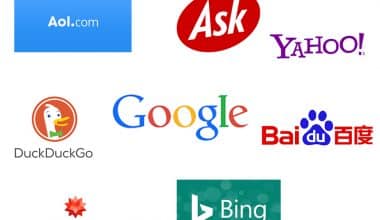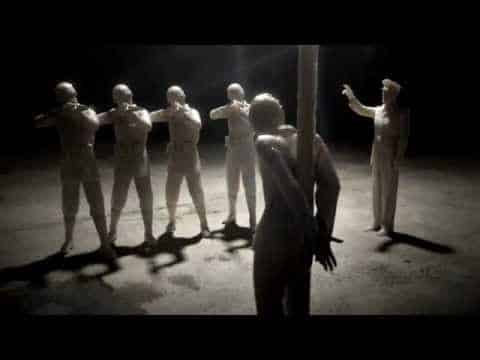Over the years, the human time period has changed from the stone age to the post-modern information age. So has marketing. Hence, to grasp all these eras of marketing, let’s first look at the evolution of marketing concepts.
How Has Marketing Evolved in the 21st Century?
Before the 21st century, it may take weeks for a corporation to determine whether a marketing effort was successful after its debut. Through the use of the internet and social media, businesses will know virtually immediately in the modern day.
What Has Marketing Evolution Looked Like?
The term “marketing evolution” describes the various stages that companies have gone through as they looked for novel and creative ways to generate, sustain, and grow income through client sales and alliances.
Since the early 1900s, numerous tactics have been used as various sectors developed and improved their marketing strategies.
Concept of the Evolution of Marketing
The concept of marketing evolution explains all the 5 changes that marketing has undergone. A factor that influences marketing is science and technology. Hence, the production-centered era of marketing evolution started in the industrial revolution. The relationship era is closely associated with the information era. So, one could ask the question with the progress of tech are we expecting another marketing evolution? Well, revolutionary changes to some factors in your marketing environment can lead to it. Hence, you keep watching to know when the change has arrived. Furthermore, let’s look at these 5 eras of the evolution of marketing.
Evolution of Marketing Eras
Each one of the evolution of marketing eras has peculiarities that made it stand out from others. Hence, these peculiarities could explain its adoption as the best strategy during its period.
Production orientation era:
This era of marketing evolution corresponds to the industrial revolution. Businesses believe that success is defined by reduced production costs. And it totally made sense because goods were hand-made and human labor made production costs high. So, machines made production costs cheaper. Hence, the price of goods also.
Product orientation era:
Because of the dynamic nature of marketing. Businesses had to adopt a new method of marketing. When production-oriented marketing was exhausted. Hence, the focus was now on the product. So, for companies, the deal was to add as many features to the product so that it will be glorified. And it worked.
Sales orientation era:
In this era businesses’ focus was purely on transactions. Hence, for most companies, it’s all about doing anything possible to sell the product. If you have to cut down the price, do it. For example, Standard oil had to slash the price of oil to foster sales.
Marketing orientation era:
The focus in this era of marketing evolution was to tune the product with the needs of the consumer. Hence, businesses used surveys and analyses of their market to understand their customers. Thereby gathering information that will be handy in their marketing strategy.
Relationship orientation era:
Consistent customer engagement that will build a loyal customer base for a company is the goal here. Hence, businesses build a strong lasting relationship with customers with the aim of retaining them. And also, social media has made it easier. Check out our guide on Facebook marketing.
Finally, you should know that certain modern-day businesses employ many of the ideas from these eras based on the one that is more suitable for their marketing activity. So, this is about the concept of marketing evolution. I hope it comes in handy in your business.
Beyond the Digital Marketing Era:
The term “marketing age” as of this writing is either “the digital marketing era” or “the social marketing era,” albeit history may modify it. Whatever the name, this era is defined by forging global ties and developing personal connections, involving customers in the product creation process, and by leveraging the Internet to promote word-of-mouth marketing and cultivate long-term customer relationships.
What Is the Current Era in the Evolution of Marketing?
Era of Social/Mobile Marketing : Businesses place a premium on being social and communicating with customers in real time. Businesses and customers may now connect around the clock thanks to advances in technology. Customers, not corporations, are now in charge.
How Do You Succeed in Social Marketing?
These days, having a social media presence is essential. In all aspects of marketing, salespeople who use social media beat their peers by 78 percent, according to a 2012 study by A Sales Guy Consulting. To get the most out of your social media initiatives, learn how to harness the power of crowdsourcing and ongoing interaction. Utilize social media to start dialogues with customers about potential new markets, products, and promotions. Create resources for customer support to address service complaints in open forums. Create brand ambassadors using relationship marketing on social media to promote word-of-mouth promotion and foster enduring relationships. Social media may help you build a brand that people want to talk about and share if you utilize it wisely.
Making Use of Modern Marketing Technology
Modern technology offers other opportunities besides social media marketing. For marketers, data is now more crucial and available than ever before. By developing intricate models of client behavior and preferences with the help of data mining experts, you can strengthen your relationships with specific customers by providing them with promotions and shopping experiences that are specially tailored to their needs. Contextual advertising relies on data collection to function, giving advertisers the ability to target ads solely at potential buyers.
Companies can use the precision marketing technique to increase their revenue from certain customers thanks to access to big data. According to marketing-schools.org, precision marketing is the tactic of focusing on particular customer personas and providing them with offers and incentives that foster brand loyalty. The “commuter’s special,” a $2 coffee and donut deal available Monday through Friday, is an illustration of what might be offered by a bakery.
Another one of the many ways technology may improve marketing efforts is through search engine optimization. When you know how to get your website to the top of search results, you may reach a lot of potential clients at the exact time that they are looking for the items or services that you offer.
What Is the Evaluation of Marketing?
The objective of marketing evaluation is to assess the marketing department’s success toward its annual objectives. It clarifies the areas where marketing mix is required (that can be segmentation, targeting). To determine if the company’s products, services, and ideas fulfill consumer and stakeholder requirements.
When Did the Discipline of Marketing Start?
This question has a complicated answer. Let’s consult the Online Etymology Dictionary to gain a general idea of how marketing came to be. According to the authors, this phrase was first used to refer to “buying and selling, [the] act of transacting business in a market,” in the 1560s. Although it’s a very precise definition, it serves as a useful reminder that “marketing” was still in use when marketing principles were developed. It was only a relatively simple task.
Our dictionary states that the term “marketing” was first used in 1897 to refer to the “process of transporting commodities from producer to consumer with [an] emphasis on advertising and sales” in modern commercial contexts.
The foundations of this subject may be traced back to the turn of the 20th century, albeit it took some time for the profession to transition from a product-centric perspective to what we now define as a marketing orientation.
What Drives the Evolution of Marketing?
The evolution of marketing is driven by two main factors:
- Marketing technology: Before in-store merchandising and face-to-face contacts, illustrated print advertising was one of the only workable channels available to marketers. Today’s digital marketing makes use of a variety of technologies, including email and multimedia text messaging.
- Client’s needs: What does today’s consumer expect that yesterday’s consumer did not? What previously out of their grasp are they now able to afford? Your competition will stay up with your audience if you can’t.
Looking Ahead: How Marketing Will Change in the Future
Evolution never just ends. Future product, customer, and brand positioning strategies will produce cutting-edge marketing strategies that represent the next phase of the industry’s evolution.
How Will Marketing Look Like in 2023?
As always, evolving consumer wants and new technology will prompt the development of fresh marketing strategies. As augmented reality (AR) and virtual reality (VR) become more widely used, clever inventors will be able to design increasingly immersive experiences.
The popularity of new social media sites emphasizes the value of promoting consumer connection. Companies will discover new approaches to participate constructively and collaboratively within a bigger ecosystem that is governed by consumers rather than concentrating simply on interactions between the firm and its customers.
Implement the Marketing Evolution
120 years have passed since marketing first began. Nobody currently fully understands where the twenty-first century will likely lead us. The strongest will prevail, that much is certain.
Evolution of Marketing FAQs
What are the five stages of marketing evolution?
Since the beginning of the Industrial Revolution, marketing has advanced through five stages, according to Philip Kotler’s book The Evolution of Marketing: the production period, the product era, the selling era, the marketing era, and the holistic era.
How has marketing changed over the years?
The ability to reach larger audiences and more diverse target markets has altered as a result of the development of new media tools. Additionally, the focus of marketing has changed from consumer-based specific purchasing to consumer-based brand loyalty and desire.
How will marketing change in the future?
In the future, marketing will need to become more technology and data-driven, hyper-personalized, one-to-one, and real-time. It will no longer be necessary to engage in obtrusive, pointless, and irrelevant advertising, and marketing may fully transition to consumer advocacy.
Related Articles
- Photography Business Cards: Free Templates, Samples, Ideas, Tools (+ Quick Guide)
- SALON BUSINESS CARDS: Catchy Templates and Ideas to inspire you (+ quick tools)
- BEST DEBT RELIEF COMPANIES: Top Best Debt Relief Companies
- Real Estate Business Cards: Best Ideas, Templates, Samples & Quotes to Close deals Faster
- 7 Marketing Tips to Stay On Top Of The Game






